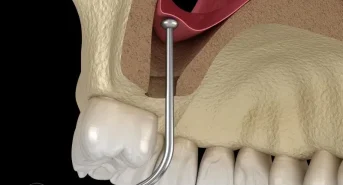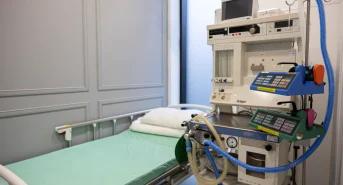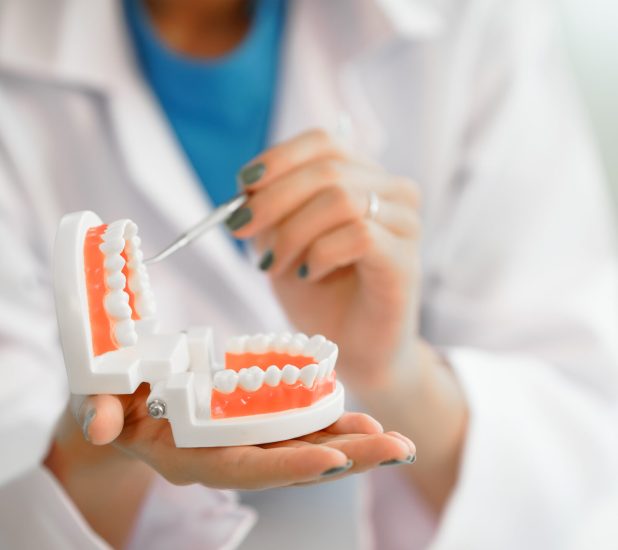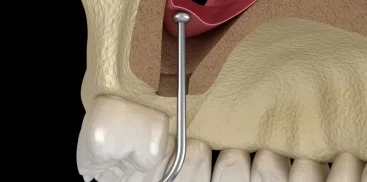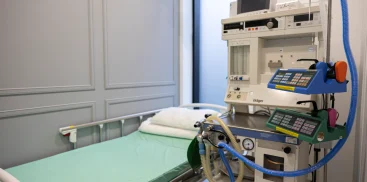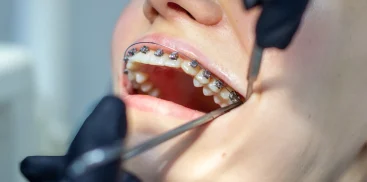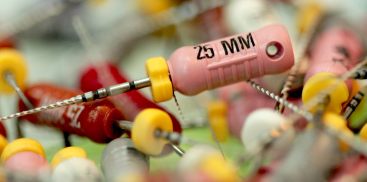Dry socket is a sometimes painful complication after tooth extraction.
Also called empty socket, post-extraction pain and post-extraction alveolitis, this condition results from the lack of a clot in the socket, which is filled with shreds of decaying tissue.
Dry socket is usually felt 2-5 days after the extraction procedure.
This type of complication occurs in approximately 4% of patients, and the group at increased risk are people over 40 years of age, mainly women.
What does a dry socket look like and why should you not delay visiting the dentist if you notice its symptoms?
How to recognize dry socket?
Symptoms
Dry socket is an inflammatory disease.
However, it is not a disease directly related to the development of microorganisms.
In the oral cavity, as a result of this type of complications, an empty socket is visible, and sometimes you can even see bone inside it. The main symptoms of dry socket are:
- redness and swelling around the wound after tooth extraction;
- severe pain radiating to the auricle, temple and eye socket;
- unpleasant odor from the mouth;
- taste disturbances;
- trismus (difficulty opening the mouth);
- fever;
- enlarged lymph nodes.
Pain is usually felt by patients 2-4 days after tooth extraction.
However, they do not always have to mean that the clot is washed out.
However, if the pain intensifies and other symptoms mentioned above are also noticeable, you should go to a dentist’s office for a check-up as soon as possible.
Dry socket – treatment
The occurrence of dry socket is not a life-threatening complication, but its treatment should not be delayed.
Failure to treat a dry socket may lead to the formation of an abscess and, in extreme cases, even bone inflammation.
A tooth abscess occurs as a result of tissue inflammation and can create a cavity filled with dead tissue and bacteria.
Severe pain that persists
es, despite the use of anti-inflammatory agents prescribed by the doctor, should encourage the patient to visit the dentist again.
The doctor will perform curettage of the socket, during which he will gently clean the wound, remove remaining food remnants and rinse it with a saline solution.
He will then apply special painkillers and anti-inflammatory drugs to the empty socket, which act as a kind of dressing.
They provide a mild anesthetic effect for many hours after being placed in the area where the tooth was extracted.
Other preparations used to treat dry socket are tablets with acetylsalicylic acid, which also has anti-inflammatory, analgesic and anti-swelling properties.
Treatment of dry socket may also be done with antibiotics if the patient has symptoms such as fever or enlargement of nearby lymph nodes.
Treatments using laser therapy or ozone therapy are increasingly used to accelerate wound healing processes.
Dry tooth decay should be treated in every case, because lack of specialist intervention may lead to more serious complications.
Quick diagnosis and following the doctor’s recommendations bring relief, and the pain symptoms disappear after 7-10 days
Dry socket – causes
Dry socket occurs when a clot is accidentally dislodged or does not form at all after a tooth extraction procedure.
That is why it is so important to go for a visit after a large meal, because eating it too soon after tooth extraction can damage the clot that is forming.
Dry socket also often occurs as a result of too intensive rinsing of the mouth after the procedure.
Other factors that may contribute to dry socket include:
- smoking, hormonal disorders,
- immune disorders, blood clotting disorders that make it difficult to form a clot,
- deficiency of appropriate vitamins, lack of attention to oral hygiene.
- Tooth extraction can be quite difficult to cope with
This is a procedure for the patient, who must also take special care of oral hygiene afterwards to accelerate the healing process.
To minimize pain after extraction, many dentists use antibiotics, including:
azithromycin, amoxicillin, metronidazole, clavunate or clindamycin.
Additionally, chlorhexidine, also available in the form of a gel, is used to rinse the mouth.
In combination with antibiotics, it effectively minimizes the risk of complications caused by the absence of a clot.
Dry socket – how to prevent it?
After tooth extraction, it is particularly important for smokers to limit or stop smoking, at least for up to 72 hours after tooth extraction.
If the patient is unable to stop smoking after tooth extraction, he or she should cover the empty socket with gauze and not inhale too strongly so as not to create negative pressure that may damage the clot.
After smoking, you can gently rinse your mouth with an antiseptic.Recommendations for patients after removal of molars or other teeth include:
- following a semi-liquid or liquid diet,
- refraining from drinking alcohol,
- avoiding too intense physical exercise,
- refraining from too hot baths and visits to the sauna,
- avoiding drinks that are too hot.
The area around the empty socket should be gently cleaned with a soft-bristled toothbrush.
You can rinse your mouth using ready-made solutions or herbal infusions, e.g. chamomile or sage.
Summary
Pulsating pain and other symptoms of dry socket are annoying for the patient, although fortunately they are quite easy to treat.
Taking care of proper oral hygiene and following the doctor’s recommendations usually leads to their quick disappearance, so you should not delay visiting the dentist.
If left untreated, dry socket in extreme cases may lead to bone inflammation requiring hospitalization.

